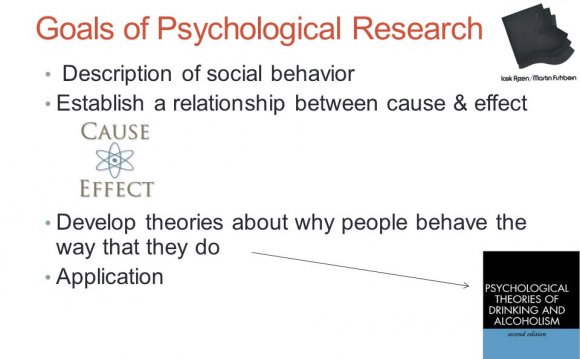
 Broadly speaking, science is interested in answering questions and acquiring knowledge concerning the observable universe. Various research methods are used in an attempt to satisfy these interests. In future articles I’ll present a discussion of different research designs. But, before discussing the various designs used by researchers it is important to identify the goals of scientific research.
Broadly speaking, science is interested in answering questions and acquiring knowledge concerning the observable universe. Various research methods are used in an attempt to satisfy these interests. In future articles I’ll present a discussion of different research designs. But, before discussing the various designs used by researchers it is important to identify the goals of scientific research.
Goals of Scientific Research
Many researchers agree that the goals of scientific research are: description, prediction, and explanation/understanding. Some individuals add control and application to the list of goals. For now, I am going to focus on discussing description, prediction and explanation/understanding.
Description
Description refers to the procedures used to define, classify and categorize subjects and their relationships. Descriptions allow us to establish generalizations and universals. By gathering information on a large group of people, for instance, a researcher can describe the average member or the average performance of a member of the specific group being studied.
Describing observations of large groups of people does not take away from the fact that there are important differences among individuals. That is, researchers merely attempt to describe subjects or events on the basis of average performance (generally speaking). Alternatively, description allows researchers to describe a single phenomenon and or observations of a single person.
In science, descriptions are systematic and precise. Scientific research makes use of operational definitions. Operational definitions characterize events, qualities and concepts in terms of observable operations, or procedures used to measure them.
Researchers are interested in describing only things that are relevant to the study. They have no interest in describing observations that are irrelevant to the investigation.
Prediction
In addition developing descriptions, researchers make predictions. Descriptions of events often provide a basis for prediction. Predictions are sometimes made in the form of hypotheses, which are tentative, testable predictions concerning the relationships between or among variables. Hypotheses are frequently derived from theories, or interrelated sets of concepts that explain a body of data and make predictions.
Prediction of later performance is of particular importance to researchers. For example:
- Does eating a low-calorie diet increase chances of living longer?
- Does undergraduate GPA predict how well one will do in graduate school?
- Do high levels of intelligence predict avoidance of cognitive biases?
When a variable can be used to predict another variable or variables we can say the variables are correlated. Correlation exists when different measures vary together, which makes it possible to predict values of one variable by knowing values of another variable.
Keep in mind predictions are made with varying degrees of certainty. Correlation coefficients state the degree of relationship between the variables in terms of both strength and direction of the relationship. In other words, correlation coefficients determine how well measures co-vary.
Explanation/Understanding
Arguably, the most important goal of scientific research is explanation. Explanation is achieved when the cause or causes of a phenomenon are identified. In order to determine cause and effect three pre-requisites are essential: covariation of events, proper time-order sequence and the elimination of plausible alternative causes.
- Covariation of events (relationship): The variables must correlate. To determine the relationship of two variables, it must be determined if the relationship could occur due to chance. Lay observers are often not good judges of the presence of relationships, thus, statistical methods are used to measure and test the existence and strength of relationships.
- Proper time-order sequence (time precedence): For 1 to cause 2, 1 must precede 2. The cause must precede the effect.
- Elimination of plausible alternative causes (non-spuriousness, or genuine): For a relationship between A and B to be nonspurious, there must not be a C that causes both A and B such that the relationship between A and B vanishes once C is controlled.
Share this Post
INTERESTING PSYCHOLOGY VIDEO













